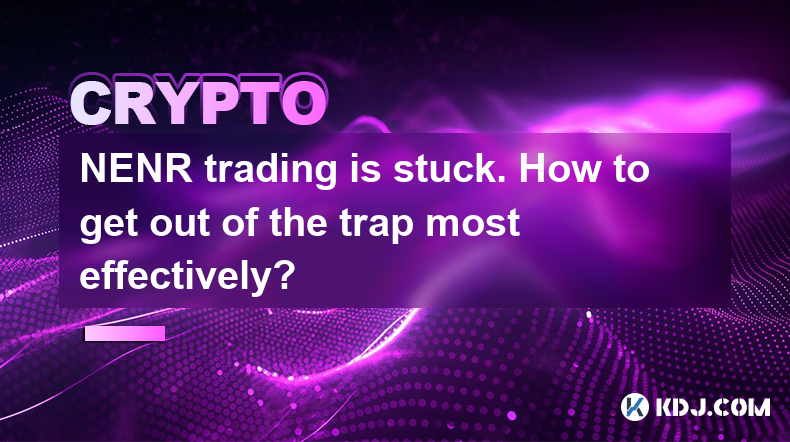-
 Bitcoin
Bitcoin $107,792.7836
-1.83% -
 Ethereum
Ethereum $2,490.3334
-3.99% -
 Tether USDt
Tether USDt $1.0003
0.00% -
 XRP
XRP $2.2177
-2.39% -
 BNB
BNB $652.5191
-1.50% -
 Solana
Solana $146.6253
-4.04% -
 USDC
USDC $1.0001
0.01% -
 TRON
TRON $0.2832
-1.14% -
 Dogecoin
Dogecoin $0.1623
-5.82% -
 Cardano
Cardano $0.5701
-5.05% -
 Hyperliquid
Hyperliquid $38.6009
-4.85% -
 Sui
Sui $2.8604
-5.95% -
 Bitcoin Cash
Bitcoin Cash $487.6897
-2.30% -
 Chainlink
Chainlink $13.0565
-5.05% -
 UNUS SED LEO
UNUS SED LEO $9.0735
0.43% -
 Avalanche
Avalanche $17.6635
-5.16% -
 Stellar
Stellar $0.2382
-2.81% -
 Toncoin
Toncoin $2.7498
-4.12% -
 Shiba Inu
Shiba Inu $0.0...01134
-4.91% -
 Litecoin
Litecoin $86.4080
-3.46% -
 Hedera
Hedera $0.1526
-4.69% -
 Monero
Monero $313.9315
-1.80% -
 Dai
Dai $1.0000
0.00% -
 Polkadot
Polkadot $3.3426
-5.85% -
 Ethena USDe
Ethena USDe $1.0001
-0.02% -
 Bitget Token
Bitget Token $4.4044
-3.80% -
 Uniswap
Uniswap $6.9000
-9.33% -
 Pepe
Pepe $0.0...09552
-5.65% -
 Aave
Aave $263.0698
-6.29% -
 Pi
Pi $0.4693
-4.76%
NENR trading is stuck. How to get out of the trap most effectively?
To escape NENR trading, assess your positions, implement risk management, use advanced tools, adjust strategies, and seek professional guidance to minimize losses and regain control.
May 02, 2025 at 12:42 am

NENR (No Entry, No Return) trading is a situation where traders find themselves unable to enter or exit a position effectively, often due to market volatility, liquidity issues, or other factors. Getting out of this trap requires a strategic approach to minimize losses and regain control over your trading activities. This article will explore various methods to effectively escape the NENR trading trap.
Understanding NENR Trading
NENR trading occurs when a trader is unable to enter a new position or exit an existing one due to market conditions. This can happen in highly volatile markets where prices move rapidly, or in low liquidity situations where there are not enough buyers or sellers to facilitate trades. Understanding the root causes of NENR trading is crucial for developing effective strategies to overcome it.
Assessing Your Current Position
Before taking any action, it's essential to assess your current position thoroughly. This involves reviewing your open trades, the current market conditions, and any potential risks or opportunities.
- Review your open trades: Check the status of your current positions, including entry points, stop-loss levels, and any unrealized profits or losses.
- Analyze market conditions: Look at the current market trends, volatility, and liquidity to understand the factors contributing to your NENR situation.
- Identify risks and opportunities: Determine the potential risks of holding your current positions and any opportunities that may arise from changing market conditions.
Implementing Risk Management Strategies
Effective risk management is key to escaping the NENR trading trap. By implementing robust risk management strategies, you can protect your capital and minimize potential losses.
- Set appropriate stop-loss orders: Ensure that your stop-loss orders are set at levels that will limit your losses without being triggered by normal market fluctuations.
- Use position sizing: Adjust the size of your positions to manage risk effectively. Smaller positions can help reduce the impact of adverse market movements.
- Diversify your portfolio: Spread your investments across different assets to reduce the risk of being stuck in a single position.
Utilizing Advanced Trading Tools
Advanced trading tools can provide valuable insights and help you navigate out of the NENR trap. These tools can include technical analysis software, algorithmic trading systems, and real-time market data feeds.
- Technical analysis software: Use tools like charting platforms and indicators to identify potential entry and exit points based on historical price data.
- Algorithmic trading systems: Implement automated trading strategies that can execute trades based on predefined criteria, helping you to enter or exit positions more effectively.
- Real-time market data feeds: Stay informed about market movements and liquidity conditions with up-to-date data, allowing you to make more informed trading decisions.
Adjusting Your Trading Strategy
Sometimes, the best way to escape the NENR trap is to adjust your trading strategy. This may involve changing your approach to entering and exiting trades, or adopting new trading techniques that are better suited to current market conditions.
- Adopt a more flexible approach: Be willing to adapt your trading strategy based on changing market conditions. This may involve switching from a trend-following strategy to a range-trading strategy, or vice versa.
- Use different timeframes: Analyze the market using different timeframes to identify potential entry and exit points that may not be visible on your usual timeframe.
- Incorporate new trading techniques: Consider learning and implementing new trading techniques, such as scalping or swing trading, to improve your ability to enter and exit positions effectively.
Seeking Professional Guidance
If you find yourself consistently stuck in NENR trading situations, it may be beneficial to seek professional guidance. Trading mentors, financial advisors, or experienced traders can provide valuable insights and help you develop more effective trading strategies.
- Find a trading mentor: Look for experienced traders who can offer personalized guidance and help you improve your trading skills.
- Consult a financial advisor: A professional financial advisor can provide advice on managing your investments and developing a more robust trading strategy.
- Join a trading community: Engage with other traders in online forums or trading groups to share experiences and learn from their strategies for escaping NENR traps.
Frequently Asked Questions
Q: Can NENR trading be completely avoided?
A: While it's challenging to completely avoid NENR trading, you can reduce the likelihood of getting stuck by implementing effective risk management strategies, staying informed about market conditions, and being flexible with your trading approach.
Q: How can I tell if I'm in an NENR trading situation?
A: You may be in an NENR trading situation if you find it difficult to enter new positions or exit existing ones, often due to high market volatility or low liquidity. Signs include frequent order rejections, wide bid-ask spreads, and significant slippage.
Q: Are there specific cryptocurrencies that are more prone to NENR trading?
A: Yes, cryptocurrencies with lower liquidity and higher volatility, such as newer or less popular altcoins, are more prone to NENR trading situations. Major cryptocurrencies like Bitcoin and Ethereum tend to have higher liquidity and are less likely to result in NENR traps.
Q: How can I improve my trading skills to avoid NENR situations?
A: Improving your trading skills involves continuous learning and practice. Consider taking trading courses, reading books on trading strategies, and using demo accounts to practice without risking real money. Additionally, staying updated with market news and trends can help you make more informed trading decisions.
Disclaimer:info@kdj.com
The information provided is not trading advice. kdj.com does not assume any responsibility for any investments made based on the information provided in this article. Cryptocurrencies are highly volatile and it is highly recommended that you invest with caution after thorough research!
If you believe that the content used on this website infringes your copyright, please contact us immediately (info@kdj.com) and we will delete it promptly.
- Bitcoin's Pattern Break: Are HODLers the Key to the Next Surge?
- 2025-07-04 18:50:12
- Bitcoin Price, Trump's Bill, and the $150K Dream: A NYC Take
- 2025-07-04 19:50:12
- Ethereum, LILPEPE, and the July Bounce: Will Pepe Steal ETH's Thunder?
- 2025-07-04 19:10:12
- Binance Institutional Loans: Unlocking 4x Leverage and Zero Interest for Whales
- 2025-07-04 19:15:12
- Bitcoin Bull Run: Analysts Eye Peak in Late 2025?
- 2025-07-04 19:20:13
- Pepe Indicators, Bullish Forecast: Can the Meme Coin Rally?
- 2025-07-04 19:25:12
Related knowledge

How to customize USDT TRC20 mining fees? Flexible adjustment tutorial
Jun 13,2025 at 01:42am
Understanding USDT TRC20 Mining FeesMining fees on the TRON (TRC20) network are essential for processing transactions. Unlike Bitcoin or Ethereum, where miners directly validate transactions, TRON uses a delegated proof-of-stake (DPoS) mechanism. However, users still need to pay bandwidth and energy fees, which are collectively referred to as 'mining fe...

USDT TRC20 transaction is stuck? Solution summary
Jun 14,2025 at 11:15pm
Understanding USDT TRC20 TransactionsWhen users mention that a USDT TRC20 transaction is stuck, they typically refer to a situation where the transfer of Tether (USDT) on the TRON blockchain has not been confirmed for an extended period. This issue may arise due to various reasons such as network congestion, insufficient transaction fees, or wallet-rela...

How to cancel USDT TRC20 unconfirmed transactions? Operation guide
Jun 13,2025 at 11:01pm
Understanding USDT TRC20 Unconfirmed TransactionsWhen dealing with USDT TRC20 transactions, it’s crucial to understand what an unconfirmed transaction means. An unconfirmed transaction is one that has been broadcasted to the blockchain network but hasn’t yet been included in a block. This typically occurs due to low transaction fees or network congestio...

How to check USDT TRC20 balance? Introduction to multiple query methods
Jun 21,2025 at 02:42am
Understanding USDT TRC20 and Its ImportanceUSDT (Tether) is one of the most widely used stablecoins in the cryptocurrency market. It exists on multiple blockchain networks, including TRC20, which operates on the Tron (TRX) network. Checking your USDT TRC20 balance accurately is crucial for users who hold or transact with this asset. Whether you're sendi...

What to do if USDT TRC20 transfers are congested? Speed up trading skills
Jun 13,2025 at 09:56am
Understanding USDT TRC20 Transfer CongestionWhen transferring USDT TRC20, users may occasionally experience delays or congestion. This typically occurs due to network overload on the TRON blockchain, which hosts the TRC20 version of Tether. Unlike the ERC20 variant (which runs on Ethereum), TRC20 transactions are generally faster and cheaper, but during...

The relationship between USDT TRC20 and TRON chain: technical background analysis
Jun 12,2025 at 01:28pm
What is USDT TRC20?USDT TRC20 refers to the Tether (USDT) token issued on the TRON blockchain using the TRC-20 standard. Unlike the more commonly known ERC-20 version of USDT (which runs on Ethereum), the TRC-20 variant leverages the TRON network's infrastructure for faster and cheaper transactions. The emergence of this version came as part of Tether’s...

How to customize USDT TRC20 mining fees? Flexible adjustment tutorial
Jun 13,2025 at 01:42am
Understanding USDT TRC20 Mining FeesMining fees on the TRON (TRC20) network are essential for processing transactions. Unlike Bitcoin or Ethereum, where miners directly validate transactions, TRON uses a delegated proof-of-stake (DPoS) mechanism. However, users still need to pay bandwidth and energy fees, which are collectively referred to as 'mining fe...

USDT TRC20 transaction is stuck? Solution summary
Jun 14,2025 at 11:15pm
Understanding USDT TRC20 TransactionsWhen users mention that a USDT TRC20 transaction is stuck, they typically refer to a situation where the transfer of Tether (USDT) on the TRON blockchain has not been confirmed for an extended period. This issue may arise due to various reasons such as network congestion, insufficient transaction fees, or wallet-rela...

How to cancel USDT TRC20 unconfirmed transactions? Operation guide
Jun 13,2025 at 11:01pm
Understanding USDT TRC20 Unconfirmed TransactionsWhen dealing with USDT TRC20 transactions, it’s crucial to understand what an unconfirmed transaction means. An unconfirmed transaction is one that has been broadcasted to the blockchain network but hasn’t yet been included in a block. This typically occurs due to low transaction fees or network congestio...

How to check USDT TRC20 balance? Introduction to multiple query methods
Jun 21,2025 at 02:42am
Understanding USDT TRC20 and Its ImportanceUSDT (Tether) is one of the most widely used stablecoins in the cryptocurrency market. It exists on multiple blockchain networks, including TRC20, which operates on the Tron (TRX) network. Checking your USDT TRC20 balance accurately is crucial for users who hold or transact with this asset. Whether you're sendi...

What to do if USDT TRC20 transfers are congested? Speed up trading skills
Jun 13,2025 at 09:56am
Understanding USDT TRC20 Transfer CongestionWhen transferring USDT TRC20, users may occasionally experience delays or congestion. This typically occurs due to network overload on the TRON blockchain, which hosts the TRC20 version of Tether. Unlike the ERC20 variant (which runs on Ethereum), TRC20 transactions are generally faster and cheaper, but during...

The relationship between USDT TRC20 and TRON chain: technical background analysis
Jun 12,2025 at 01:28pm
What is USDT TRC20?USDT TRC20 refers to the Tether (USDT) token issued on the TRON blockchain using the TRC-20 standard. Unlike the more commonly known ERC-20 version of USDT (which runs on Ethereum), the TRC-20 variant leverages the TRON network's infrastructure for faster and cheaper transactions. The emergence of this version came as part of Tether’s...
See all articles

























































































